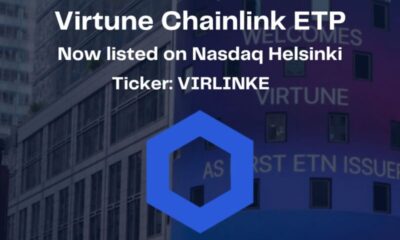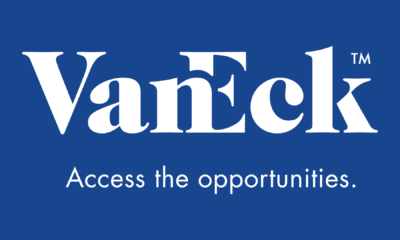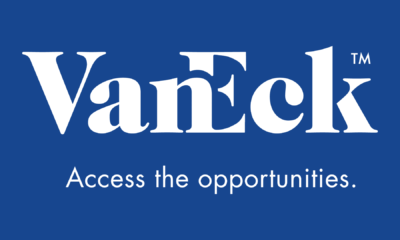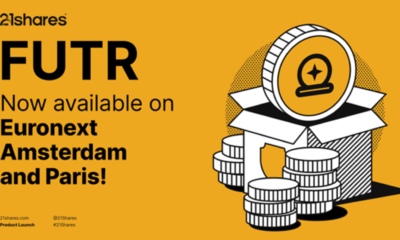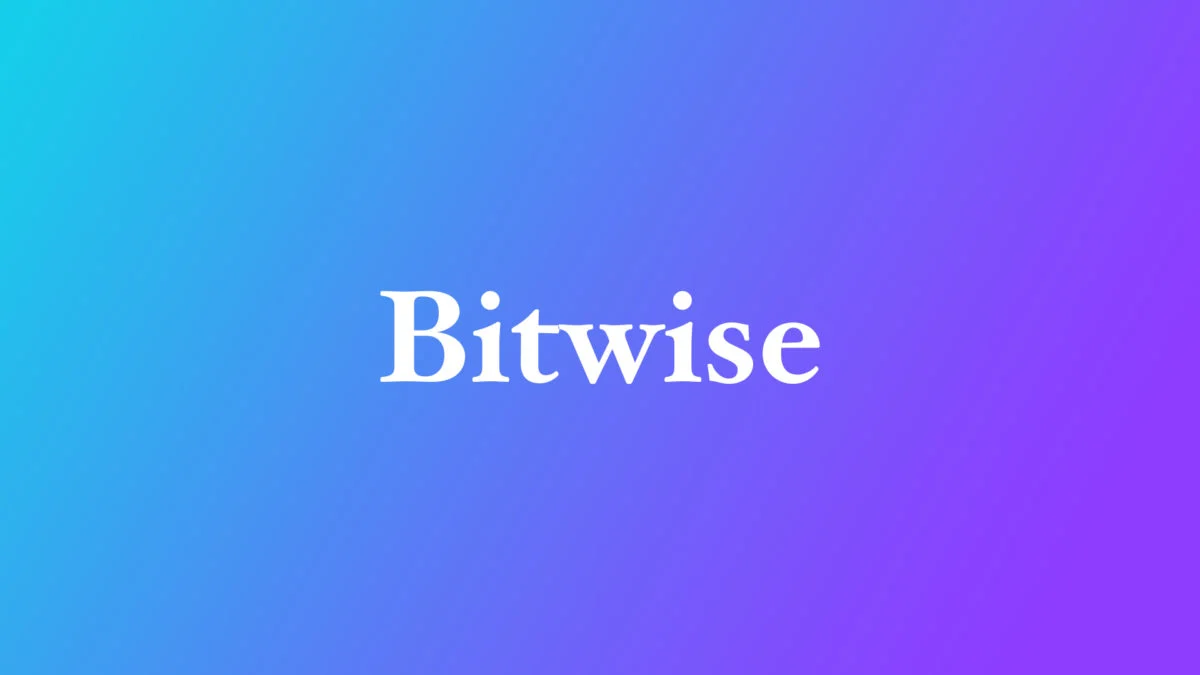Innan vi tittar på olika alternativa sätt att investera i Chainlink med en börshandlad produkt så är det bra att veta vad Chainlink är. Chainlink (LINK) är en kryptovaluta och teknologiplattform som gör det möjligt för icke-blockkedjeföretag att säkert ansluta till blockchain-plattformar. Chainlink är mellanprogram som kopplar ihop blockkedjebaserade smarta kontrakt med extern data, såsom baseballpoäng eller aktiekurser. Chainlinks LINK-valuta betalar Chainlink-nätoperatörer och ställer säkerheter för nätverkets smarta kontraktsavtal.
Chainlink är ett decentraliserat orakelnätverk eller blockchain-abstraktionslager. Chainlink använder blockkedjeteknik för att på ett säkert sätt möjliggöra beräkningar i och utanför kedjan, vilket stöder vad det kallar smarta hybridkontrakt och dess interoperabilitetsprotokoll över kedjan.
Chainlink-blockkedjan är värd på Ethereum-plattformen, som använder driftsprotokollet proof-of-stake. Dessutom är Chainlink ett blockchain-projekt med öppen källkod, vilket innebär att alla kan se projektets kod och bidra.
Förstå Chainlink
Chainlink blockchain kan stödja säker delning av ingångar, utgångar och beräkningar. Några funktioner i Chainlink inkluderar:
- Stödjer decentraliserade dataflöden: Data från många källor kan säkert samlas in och bearbetas för smarta hybridkontrakt.
- Tillhandahålla verifierbara källor till slumpmässighet: Applikationer som spel som kräver kryptografiskt säkerställd slumpmässighet kan använda Chainlink.
- Möjliggör automatisering: Chainlink smarta kontrakt kan automatisera viktiga funktioner och händelsedrivna uppgifter för företag.
- Stödjer interoperabilitet mellan blockkedjor: Chainlink kan koppla ihop blockkedjeplattformar för att stödja utbyte av meddelanden, tokens och specifika åtgärder.
Chainlink är ett blockkedjebaserat decentraliserat orakelnätverk som lanserades 2017. Oracles är nätverksverktyg som kopplar blockkedjor till externa system, vilket gör det möjligt för smarta kontrakt att verkställas baserat på in- och utdata som härrör från blockkedjan.
- Även om traditionella orakel är centraliserade decentraliserar Chainlink processen att flytta data till och från blockkedjor genom ”hybrid smarta kontrakt.” LINK-tokens används för att belöna Chainlink-nätverksoperatörer för att de hämtar data från flöden utanför kedjan, formaterar data till tillgängliga format, och utföra beräkningar utanför kedjan.
Chainlinks decentraliserade orakelnätverk är ett system av noder som följer inställda protokoll. Nodoperatörer måste satsa – låsa ett visst antal – sina LINK-tokens. Nodoperatörer sätter sina egna avgifter baserat på efterfrågan på den resurs utanför kedjan de tillhandahåller.
Chainlink-nodoperatörer med de största insatserna är bäst positionerade för att tjäna LINK-belöningar.
Eftersom Chainlink tillåter blockkedjor att utbyta data med off-chain-system på ett decentraliserat och manipuleringssäkert sätt, har Chainlink oracle-nätverket många användningsområden. Chainlink har använts för att rättvist distribuera icke-fungibla tokens (NFT), gamifiera personliga besparingar och underlätta omkalibreringar av kryptovaluta-tokens, bland andra applikationer.
Chainlink skapades av Sergey Nazarov och Steve Ellis, som skrev en vitbok från 2017 med Ari Juels.8 Nätverket som lanserades 2019. LINK är ett ERC-20-token, vilket betyder att det är kompatibelt med andra valutor och smarta kontrakt som stöds av Ethereum plattform.
Hur skiljer sig Chainlink från Ethereum?
Chainlink-nätverket är på vissa sätt ett komplement till Ethereum-nätverket och andra blockkedjor. Chainlink kan underlätta säker kommunikation mellan Ethereum-projekt och olika data utanför kedjan. Eftersom Chainlinks LINK-token är byggd på Ethereum-plattformen, är LINK kompatibel med Ethereum-plattformens protokoll.
Ethereum-tokens kan användas för att spendera på inköp, underlätta smarta kontrakt och betala validatorer för driften av Ethereum-nätverket. Chainlink-tokens har bara ett enda användningsfall, vilket är att betala nodoperatörer i Chainlink-nätverket.
Olika sätt att Iivestera i Chainlink med en börshandlad produkt
Vi har identifierat fem olika börshandlade produkter som ger exponering mot Chainlink. Fyra av dessa är noterade på den tyska börsen Xetra och en på svenska Nasdaq, vilket gör att det går att handla dem genom en vanlig aktiedepå, ett investeringssparkonto eller en kapitalförsäkring.
Olika index kan ge olika utveckling
Att olika index kan ge olika resultat är klart. Ett av de mest klassiska exemplen på detta är S&P 500 och Nasdaq-100 i USA. Båda två är så kallade benchmarks som ofta nämns i nyheterna, men de spårar olika saker. I detta fall spårar alla dessa olika börshandlade produkter samma underliggande tillgång, kryptovalutan Chainlink.
Antar vi att dessa börshandlade produkter ger samma avkastning kommer den som har lägst avgift att utvecklas bäst, allt annat lika. Grundregeln är alltså, betala aldrig för mycket då detta kommer att äta upp din avkastning.
21Shares (LINK ETP)
21Shares Chainlink ETP (LINK ETP) med ISIN CH1100083471 spårar värdet av kryptovalutan Chainlink.
Den börshandlade produktens TER (total cost ratio) uppgår till 2,50 % p.a. 21Shares Chainlink ETP är det största certifikatet som följer Chainlink-indexet. Certifikatet replikerar resultatet av det underliggande indexet med en skuldförbindelse med säkerheter som backas upp av fysiska innehav av kryptovalutan.
Det betyder att det går att handla andelar i denna ETF genom de flesta svenska banker och Internetmäklare, till exempel DEGIRO, Nordnet, Aktieinvest och Avanza.
CoinShares Physical Chainlink (CCHA ETN)
CoinShares Physical Chainlink (CCHA ETN) är en fysiskt uppbackad börshandlad produkt (ETP). Värdepapper får sitt värde från den underliggande kryptovalutan. All LINK hålls säkert hos Komainu – ett reglerat förvaringsinstitut för digitala tillgångar av institutionell kvalitet.
Den totala kostnadskvoten uppgår till 1,50 % p.a. Denna ETN replikerar utvecklingen av det underliggande indexet med en skuldförbindelse med säkerheter som backas upp av fysiska innehav.
Det betyder att det går att handla andelar i denna ETF genom de flesta svenska banker och Internetmäklare, till exempel DEGIRO, Nordnet, Aktieinvest och Avanza.
Global X Chainlink ETP (LI0X ETP)
Global X Chainlink ETP (LI0X ETP) investerar i Chainlink. Den totala kostnadskvoten uppgår till 0,99 % p.a. Denna ETN replikerar utvecklingen av det underliggande indexet med en skuldförbindelse med säkerheter som backas upp av fysiska innehav av kryptovalutan. Global X Chainlink ETP är ett mycket litet ETN har sin hemvist i Jersey.
Det betyder att det går att handla andelar i denna ETF genom de flesta svenska banker och Internetmäklare, till exempel DEGIRO, Nordnet, Aktieinvest och Avanza.
VanEck Chainlink ETN (VLNK ETN)
VanEck Chainlink ETN (VLNK ETN) är en fullständigt säkerställd börshandlad certifikat som investerar i en LINK digital tillgång. Certifikatet syftar till att replikera värdet och avkastningen för MVIS® CryptoCompare Chainlink VWAP Close Index.
Den totala kostnadskvoten är 1,50 % pa Indexets utveckling följs av en innehavarobligation säkerställd av fysiska innehav. Certifikatet är hemmahörande i Liechtenstein.
Det betyder att det går att handla andelar i denna ETF genom de flesta svenska banker och Internetmäklare, till exempel DEGIRO, Nordnet, Aktieinvest och Avanza.
Virtune Chainlink ETP
Virtune Chainlink ETP (VIRLINK) är en fysiskt backad börshandlad produkt (ETP) som sömlöst ger exponering mot Chainlink. Detta möjliggörs genom en transparent och fysiskt backad struktur med institutionell säkerhetsnivå. Denna börshandlade produkt kommer med en årlig förvaltningskostnad om 1,49 procent.
Det betyder att det går att handla andelar i denna ETP genom de flesta svenska banker och Internetmäklare, till exempel DEGIRO, Nordnet, Aktieinvest, Levler och Avanza.

 Nyheter2 veckor sedan
Nyheter2 veckor sedan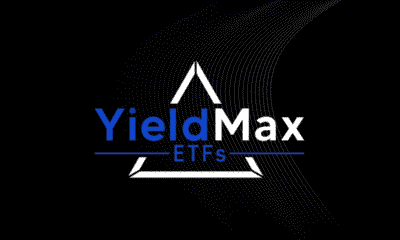
 Nyheter3 veckor sedan
Nyheter3 veckor sedan
 Nyheter3 veckor sedan
Nyheter3 veckor sedan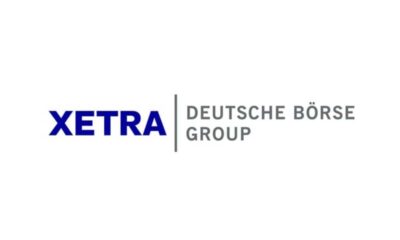
 Nyheter4 veckor sedan
Nyheter4 veckor sedan
 Nyheter3 veckor sedan
Nyheter3 veckor sedan
 Nyheter2 veckor sedan
Nyheter2 veckor sedan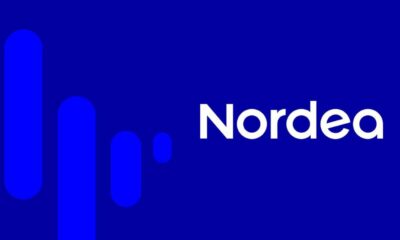
 Nyheter2 veckor sedan
Nyheter2 veckor sedan
 Nyheter4 veckor sedan
Nyheter4 veckor sedan


